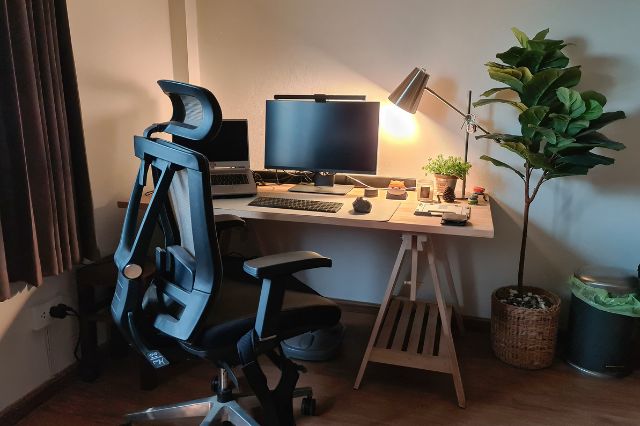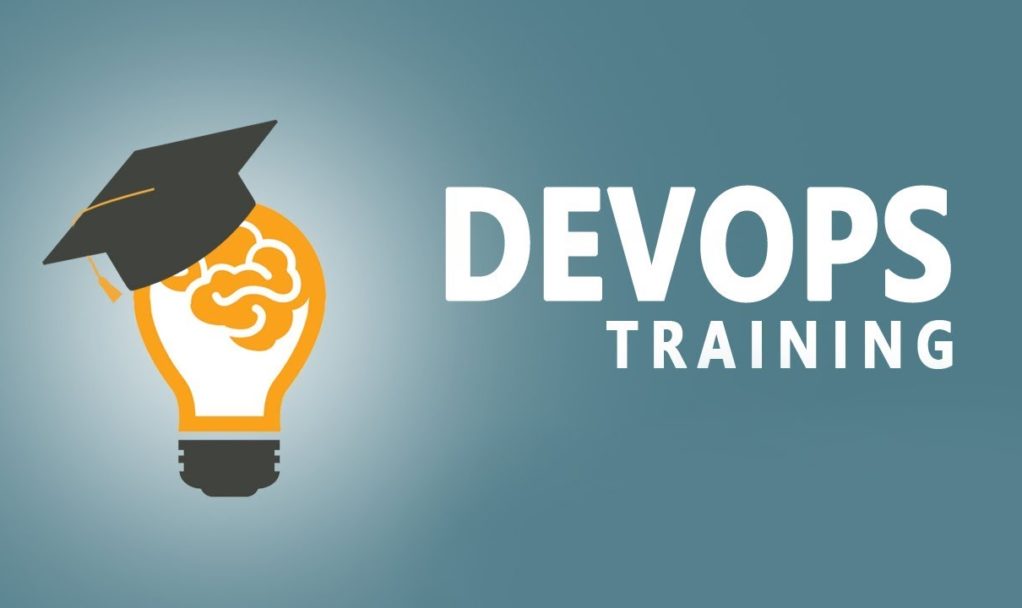Work
How Long Does A Background Check Take?


Every job seeker who is applying for a job that includes background screening has two major queries.
a) What is a background check?
b) How long does it take?
If you are also finding the answers to these questions, then you are in the right place.
Answers
a) Background check means the screening process the employer undertakes to check whether your application is true or not, whether you will be a liability or an asset to the institution, and whether you are suitable for the job.
b) The second question is a blend of numerous small doubts. Let’s clear all the doubts one by one.
Table of Contents
How Long Do Pre Employment Background Checks Take?
Generally, the duration of a pre-employment screening ranges from 2 to 5 business days. However, the length depends on specific factors such as the institution and position for which a person has applied. For example, FBI background check lasts for almost 30 days.
What Are They Looking for in a Background Check?
If you have applied for a job, you might be wondering What shows up on a background check? What are the factors that will affect your background screening? Don’t worry! We will clear all your doubts here.
A Survey from Indeed States There Are Three Main Aspects Included in a Background Screening.
1. Identity
In the background screening, the employer will go through your application and check if you are the person who you claim to be. Identity check is the first step taken in the majority pre-employment background investigation.
2. Criminal record
Every employment screening involves a criminal record check. Through this, the employer makes sure that you won’t bring a bad name to the institution. Your past criminal and court records have a significant influence on the final decision- whether you will be hired. The majority of the institutions tend to hire applicants with clean criminal records.
3. Employment history
These checks aim to test whether you are suitable for the applied job or not. Checking your employment history provides an insight into your work experience and capabilities. Your previous jobs, references from your past employers, and your previous positions are all included in your employment history check.
Along with this education, professional qualification and credit history are some critical elements checked while conducting a background screening.
Why Is Your Background Check Taking So Long?
1. Don’t worry if you haven’t heard from your employer yet. Probably your check is taking so long because one of the following obstructions has caused a delay- If you have provided incomplete information in the form, then delay is inevitable. For example, if you wrote your nickname instead of your official name.
2. The process involves contacting with education institutions and past employers. If the sources do not return calls on time there could be a delay.
3. In background screening, public records are also checked. The government institutions have certain timelines. And some institution still maintains files and archive. These restrictions could cause a delay.
4. Legal restrictions also cause a delay. The duration of the pre-employment investigation varies from state to state due to the difference in legal complications.
5. Many other uncertain reasons can make you wait longer. For example, bad weather can stop the employer from reaching out to the sources.
How To Speed up Checks?
1. Submit your application in time and ensure you submit before the holiday season to avoid delay.
2. Always be available for your employer and provide him with all the necessary information. Your quick and complete response will help in speeding up the process.
3. Reach out to the sources and make sure they reply promptly to your employer.
“Your background has a lot to do with your approach to movement.” — Cholly Atkins
Frequently Asked Questions
1. Should I worry about a background check?
If you were honest in your application, the answer is no. The purpose of background screening is to check if your application is honest or not. The employer wants to check whether you will be an asset or a liability for the institution. If you have a clean criminal record, impressive employment history, and fine credit history, there is nothing to worry about.
2. How can I pass a background check?
Before applying for the job, go and perform a background investigation on yourself. Verify your legal records and know beforehand what your employer will find out. Once you know your position you can truthfully fill your application and address all the problems in advance. The key to passing this is to keep your background clean. It is not an examination that you can pass by preparing overnight. You build your experience as you grow. For now, just fill your application honestly.
3. How do I know if I passed my background check?
The employer islegally bound to inform you if you passed or failed your background test. Once you pass the check you will be notified by the employer. If the background screening takes place as the last stage of hiring then you will know that you passed when you are hired.
4. Does a background check mean I have the job?
Not necessarily. The answer to this question varies from intuition to institution and employer to employer. If the employer considers this the last step in the hiring process then yes, passing the background test will imply that they will hire you. But some institutions have stages after a background investigation and before hiring you.
5. What will make you fail a background check?
Providing wrong information in the job application increases the chances of failure. Your identity, criminal record, education history, and employment history will all be checked during the background screening. And the higher number of black spots found in your background the greater are the chances of failure. No institution wants to hire a liability or a bad name. If the information provided by you turns out to be false or your criminal record is not satisfying then you can fail the check. Some employers consider the screening successful only when all the elements investigated are satisfactory.
“Don’t worry about your background, whether it’s odd or ordinary, use it, build on it.” — Gloria Steinem
6. Why is my background check still pending for a job?
Many factors can be responsible for this delay. Maybe your past employer or educational institute hasn’t replied to your employer. May be due to bad weather conditions the background screening has paused. May be due to incomplete information; the employer is not able to verify your information in time.
7. What happens if you fail a background check?
A failure in the background investigation could lead to disqualification. The employers tend to reject the candidates whose background screening reveals falsified information. Failure in this leaves a bad impression on your employer and reduces your chances of being hired to negligible. If you fail in a background check, it means you are not in the running anymore.
8. What if my background check is wrong?
If you find any error in your background check, you can take measures to correct them. As suggested by flexjobs- once you get your copy of the check thoroughly examine and point out the errors. The next step is to track the source of that error. If there is a criminal error you can approach the state bureau of identification for rectifying the mistake. If there is an error then you have to step up and correct it.
9. What does Level 1 mean on the background check?
Level 1 implies the basic background check. The majority of employers stop background screening at this level. As described by private eye background checks- in level 1, the screening is limited to the territories of the state in which you are currently living. Level 1 includes identity, state criminal record, employment history, and other essential information.
Conclusion
Now the majority of your doubts regarding the background check must be cleared. You know the meaning and duration of an employment background investigation. You know how to pass and speed up your background screening. You are aware of the consequences if you fail the check and the steps you can take to rectify errors in it. If you honestly fill your application then you have nothing to worry about. Inform the employer about the black spots in your background beforehand, and ensure that he trusts you as an asset for his institute. If you are a hard-working and honest candidate then the background investigation is just a formality and you don’t need to stress about it.
Work
Why Invest in Ergonomic Furniture? What Makes It Different from Traditional Furniture?


People spend a big portion of their lives working, and it’s crucial to pay attention to the environment in which they work. One of the most pertinent factors that can impact our well-being and productivity is the furniture we use.
Traditional furniture has been a staple in homes and offices for centuries, but there has been a growing recognition of the benefits of ergonomic furniture in recent years. Explore why investing in ergonomic furniture is quite a smart choice and what keeps it apart from traditional furniture.
Prioritising Comfort and Health
These pieces of furniture are designed with a primary focus on user comfort and health. Unlike traditional furniture, which often prioritises aesthetics over functionality, it is meticulously crafted to support the body’s natural posture and movements.
Chairs, desks, and other ergonomic pieces are designed to reduce strain on the neck, shoulders, back, and wrists. They are also adjustable to cater to individual preferences, ensuring that users can maintain a healthy and comfortable working posture throughout the day.
Enhanced Productivity and Focus
One of the key advantages of these furniture pieces is their ability to boost productivity and concentration. Traditional furniture may look elegant but often falls short of providing the necessary support for extended work periods.
On the other hand, ergonomic office furniture like chairs and desks are equipped with features such as lumbar support, adjustable height, and tilt functions, all of which contribute to better posture and reduced discomfort. When individuals are comfortable and pain-free, they can stay zoned in on their tasks, leading to increased efficiency and output.
Customisation for Individual Needs
They stand out due to their high level of customisation. Unlike traditional furniture, which comes in standardised sizes and designs, ergonomic pieces can be tailored to individual needs. Whether you are tall or short, have specific medical conditions, or simply prefer a particular style, ergonomic furniture can be adjusted to accommodate your requirements. This level of customisation helps ensure that users can create a workspace that is uniquely tailored to their preferences, ultimately enhancing their comfort and productivity.
A Long-Term Investment
Investing in them is a wise long-term decision. While traditional furniture may seem more affordable initially, it often comes with hidden costs in the form of health issues and decreased productivity over time. On the other hand, it may require a slightly larger upfront investment, but it pays off in the long run by reducing the risk of musculoskeletal problems and increasing work efficiency. Moreover, high-quality pieces of furniture are built to last, making it a durable and sustainable choice.
A Versatile and Adaptive Piece of Furniture
Another distinctive feature of the furniture is its versatility and adaptability. Traditional furniture is typically designed for a single purpose and may not be easily reconfigured to accommodate changing needs. They are, however, designed with versatility in mind. Many ergonomic desks, for instance, can be adjusted for sitting or standing positions, promoting movement throughout the day. This adaptability not only supports health but also caters to the evolving demands of modern workspaces.
Conclusion
In conclusion, investing in ergonomic furniture is a prudent choice for those who value their health, well-being, and productivity. Unlike traditional furniture, which often sacrifices comfort and functionality for aesthetics, the furniture places user comfort and health at the forefront. It enhances productivity, reduces the risk of health issues, offers customisation options, and is a long-term investment.
Its versatility and adaptability make it quite an ideal choice for the ever-changing demands of today’s work environment. So, when it comes to furnishing your home or office, consider making the switch to these pieces of furniture – your body and productivity will thank you.
Work
Breaking Down Barriers: 6 Online Collaboration Tools for Effective Teamwork


As remote work becomes increasingly common, effective online collaboration tools are more important than ever to help teams work together seamlessly.
Everything from project management software and video conferencing apps to a digital mailbox is available. This article will explore six top-rated online collaboration tools that can help streamline communication and collaboration within your team.
Cloud storage and file-sharing tools
Cloud storage and file-sharing tools allow teams to access and collaborate on files from anywhere. Some popular options include Dropbox, Google Drive, and Microsoft OneDrive. Dropbox is a cloud storage tool that allows teams to store, share, and collaborate on files, with features like automatic syncing and file recovery. Google Drive, on the other hand, is a popular choice for teams that use Google’s suite of productivity tools, like Google Docs and Sheets.
Video conferencing tools
Video conferencing has become vital to remote work, allowing teams to communicate face-to-face from different locations. With so many video conferencing tools available, it can be challenging to choose the right one. Some popular options include Zoom, Google Meet, and Microsoft Teams. Zoom, in particular, has become one of the most popular video conferencing tools due to its ease of use and reliability. Its features, including screen sharing and virtual backgrounds, make it an excellent option for small and large meetings.
Project management tools
Project management tools help teams stay organized and on track, whether working in the same office or remotely. Some popular project management tools include Asana, Trello, and Basecamp. Asana is a powerful project management tool that allows teams to create and assign tasks, set deadlines, and communicate with each other in real time. Trello, on the other hand, is a visual tool that uses boards, lists, and cards to organize tasks and projects.
Instant messaging tools
Instant messaging tools allow teams to communicate quickly and easily without the need for email or phone calls. Some popular instant messaging tools include Slack, Microsoft Teams, and WhatsApp. Slack is a team communication tool that allows teams to organize their conversations into channels and direct messages, share files, and integrate with other tools.
Online whiteboards and diagramming tools
Online whiteboards and diagramming tools are helpful for teams that need to brainstorm and collaborate visually. Some popular options include Miro, Lucidchart, and Canva. Miro is a whiteboard tool that allows teams to collaborate on diagrams, wireframes, and mind maps. Lucidchart, on the other hand, is a diagramming tool that allows teams to create and share flowcharts, org charts, and other visual representations.
Time tracking and productivity tools
Time tracking and productivity tools help teams stay on track and meet deadlines. Some popular options include RescueTime, Toggl, and Harvest. RescueTime is a time-tracking tool that helps teams understand how they spend their time and identify areas where they can be more productive. Toggl, on the other hand, is a simple time-tracking tool that allows teams to track time for specific tasks and projects.
Parting words
Effective teamwork requires the right tools for collaboration. Whether it’s video conferencing, project management, cloud storage, instant messaging, online whiteboards, or time tracking, many tools are available to help teams work together more efficiently and effectively. By using these six online collaboration tools, teams can break down barriers and work together, no matter where they are.
Work
What Are the Benefits of Getting a Devops Course Certification?


In order to transform collaboration, DevOps must first integrate development operations and then require a chain of tools that are interconnected. According to Gartner, businesses all over the world are increasingly embracing a culture of “devops” in the modern era. You can enroll for a Devops certification course taught by industry experts. Simplilearn also offers devops training in Hyderabad and many other cities.
The Value of Obtaining a DevOps Certification
There is a multitude of advantages to becoming certified in DevOps Foundation, some of which are as follows:
1. Better employment prospects
DevOps is a concept that is still relatively new in the world of information technology, and more and more businesses are considering implementing DevOps practices and processes. Between the required number of DevOps professionals and the number of DevOps professionals currently on the market, there is a sizable skills gap. By obtaining a DevOps certification, which verifies their skill sets within the DevOps framework, IT professionals can take advantage of the severe shortage of highly skilled workers. As a result, there will be substantially better employment opportunities.
2. Increased knowledge & skill
DevOps’ central tenet centers on the adoption of innovative decision-making techniques and thought processes. An organization will be able to put DevOps’ many technical and business advantages into practice once they are aware of them all. Professionals working together in teams with members coming from a variety of different functional backgrounds make up the core of DevOps. Developers, business analysts, quality assurance experts, and operation engineers are just a few of the experts who make up these teams.
3. Increases in wages
The rapid adoption of DevOps best practices in organizations and the implementation of those practices in the aforementioned organizations have led to enormous increases in pay for DevOps professionals.
Industry experts from all over the world believe that this trend will continue and be sustainable for the foreseeable future. In the field of information technology, DevOps professionals are paid the most.
4. Productivity and performance improvements
Downtime, which can be attributed to waiting for other employees or staff as well as other software and software-related issues, negatively affects the employees and staff at conventional IT workplaces. The main goal of an information technology professional should be to be productive for the majority of the time that they are at their place of employment. This can be achieved by cutting down on waiting time for other staff members or software updates and eliminating the parts of the work process that are both unproductive and unsatisfactory. Not only will this improve the effectiveness of the work completed, but it will also significantly raise the value of the company as a whole and of each employee personally.
5. Gain the ability to create, deploy, and secure modern applications for your organization.
The DevOps methodology’s main goal is to promote improved communication and collaboration between the teams in charge of system administration and software development. Shorter development cycles are the direct result of this, which leads to a rise in the frequency of release code being used in production. DevOps implementation can reduce months of work to a matter of hours, and it can be very easily integrated into the processes of quality assurance and quality control for defect detection. This will be extremely advantageous for your company, and it will also make you stand out from the crowd at work.
6. Reliability and Software Quality
The distinguishing feature of DevOps is the high level of accountability for creating and maintaining applications that are expected to operate as intended. When an organization adopts DevOps, every team member will work toward the same quality objectives, which may include stability, performance, and security, as well as user experience and time-to-market considerations. When put into practice, the DevOps principles will guarantee that all project activities and processes are meticulously tracked and that the organization is informed of and ready for the effects of any changes made to the processes themselves.
7. Lessening of the likelihood of unwanted change
The resistance to change in traditional information technology stems from the fear that it might impair ongoing business operations. This impediment, which slows down advancement within an organization, is the root cause of all operational issues. The implementation of multiple tiers of assessment, review, and approval workflows allowed for the monitoring and verification of change processes at each stage of their development. However, the majority of work environments are experiencing a rapid acceleration of change in the current IT market. In order to maintain product quality while meeting ever-tighter delivery deadlines, this is required. And all of this has to be done while meeting the high standards for speed and agility that are currently expected of businesses engaged in the information technology sector.
People who want to enhance the caliber of IT Service Management and comprehend the idea of IT Infrastructure Library (ITIL) frameworks must hold an IT Infrastructure Library 4 Foundation Certification in ITIL. Anyone who wants to help their company adopt a new service management culture and who needs to comprehend the fundamental concepts underlying the provision of digital and information technology services should take the ITIL 4 Foundation course. Both IT professionals looking to update their existing ITIL knowledge and those who are just beginning their journey to ITIL 4 should take this course.
The framework known as ITIL4, or IT Infrastructure Library, version 4, was created with a set of procedures to implement the most dependable type of IT Service Management. In order to emphasize service conditions and flexibility, establish the service life cycle, pursue more specialized customer comfort, and advance digital modification, the ITIL4 structure was created. whereas DevOps is a group of concepts that result from the interaction of two significant objectives. The first of these was described as “agile methods,” and the second is a greater awareness of the level of collaboration between the development and operations teams. When speaking of ITIL 4 and DevOps, the second term, DevOps, primarily focuses on integrating software testing, software development, Quality Analysis, and deployment platform, as well as maintaining a continuous integration and delivery cycle. A shorter turnaround time is the aim of operating DevOps Automation Tools in sets and moving in an agile manner.
-



 Quotes4 years ago
Quotes4 years ago125 Inspirational Car Quotes and Captions to Celebrate Your New Car
-



 Growth4 years ago
Growth4 years ago188 Deep Hurt Quotes with Images
-



 Quotes3 years ago
Quotes3 years ago148 Romantic Love Quotes for Her from the Heart
-



 Quotes3 years ago
Quotes3 years ago185 Cute Boyfriend Quotes for the Guy You Love
-



 Quotes3 years ago
Quotes3 years ago141 Best Heart Touching Quotes about Love, Life, and Friendship
-



 Quotes3 years ago
Quotes3 years ago134 Time Flies Quotes for the Unforgettable Moments
-



 Quotes3 years ago
Quotes3 years ago122 Inspirational Kite Quotes That’ll Make You Wanna Fly Right Now
-



 Quotes4 years ago
Quotes4 years ago101 Powerful Black Women Quotes to Empower You







